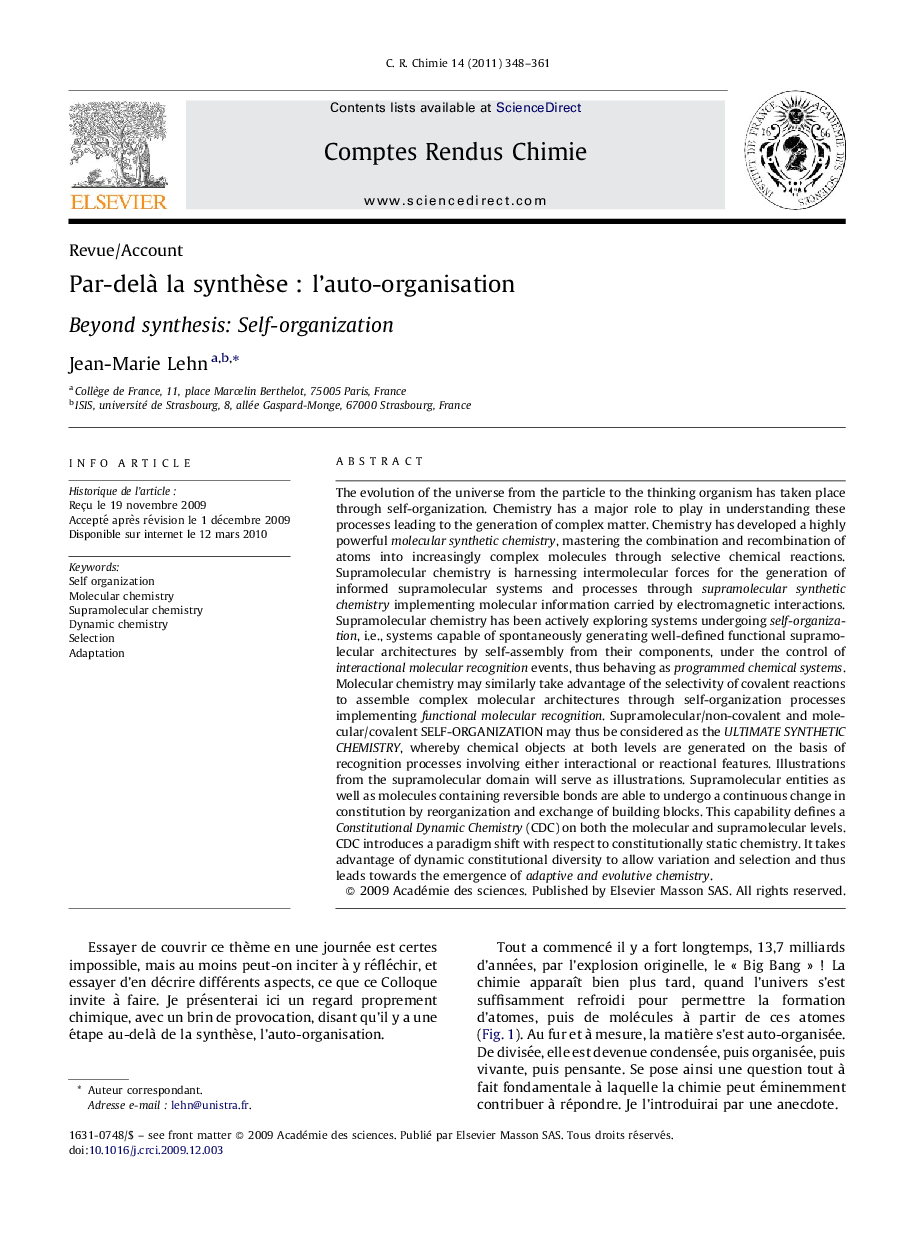| Article ID | Journal | Published Year | Pages | File Type |
|---|---|---|---|---|
| 171089 | Comptes Rendus Chimie | 2011 | 14 Pages |
The evolution of the universe from the particle to the thinking organism has taken place through self-organization. Chemistry has a major role to play in understanding these processes leading to the generation of complex matter. Chemistry has developed a highly powerful molecularsyntheticchemistry, mastering the combination and recombination of atoms into increasingly complex molecules through selective chemical reactions. Supramolecular chemistry is harnessing intermolecular forces for the generation of informed supramolecular systems and processes through supramolecularsyntheticchemistry implementing molecular information carried by electromagnetic interactions. Supramolecular chemistry has been actively exploring systems undergoing self-organization, i.e., systems capable of spontaneously generating well-defined functional supramolecular architectures by self-assembly from their components, under the control of interactionalmolecularrecognition events, thus behaving as programmedchemicalsystems. Molecular chemistry may similarly take advantage of the selectivity of covalent reactions to assemble complex molecular architectures through self-organization processes implementing functionalmolecularrecognition. Supramolecular/non-covalent and molecular/covalent SELF-ORGANIZATION may thus be considered as the ULTIMATE SYNTHETIC CHEMISTRY, whereby chemical objects at both levels are generated on the basis of recognition processes involving either interactional or reactional features. Illustrations from the supramolecular domain will serve as illustrations. Supramolecular entities as well as molecules containing reversible bonds are able to undergo a continuous change in constitution by reorganization and exchange of building blocks. This capability defines a Constitutional Dynamic Chemistry (CDC) on both the molecular and supramolecular levels. CDC introduces a paradigm shift with respect to constitutionally static chemistry. It takes advantage of dynamic constitutional diversity to allow variation and selection and thus leads towards the emergence of adaptive and evolutive chemistry.
